Challenge anyone to list the world’s most famous architects and names like Frank Lloyd Wright, Antoni Gaudí, and I.M. Pei will likely be bandied about. Most would be surprised, however, to learn that a 16th century Italian architect known as Palladio is widely considered to be the most influential individual in the history of Western architecture.

Born as Andrea Di Pietro della Gondola in Padua, Italy, he was apprenticed to a sculptor at an early age. By the age of 16 he had moved to Vicenza to work as a mason specializing in monuments and decorative sculpture. He was hired by Count Gian Giorgio Trissino, a poet and scholar who was rebuilding his countryside villa in the ancient Roman style. It was a fortunate break. Trissino was impressed enough with the young man’s work that he sponsored his education and sent him to Rome to study ancient architecture. Upon his return, the Count nicknamed him “Palladio,” after Pallas Athene, the Greek goddess of wisdom. The name stuck.
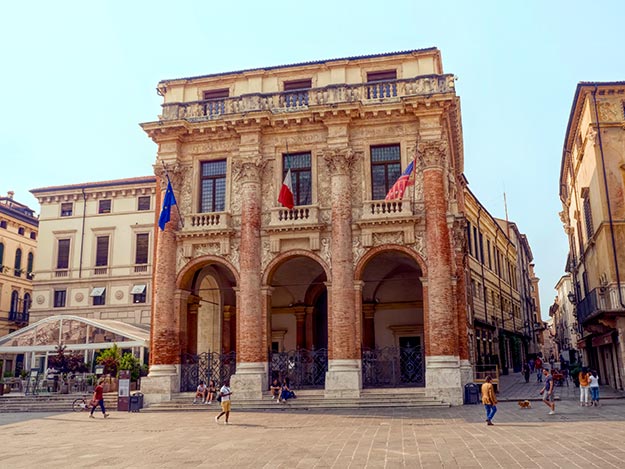
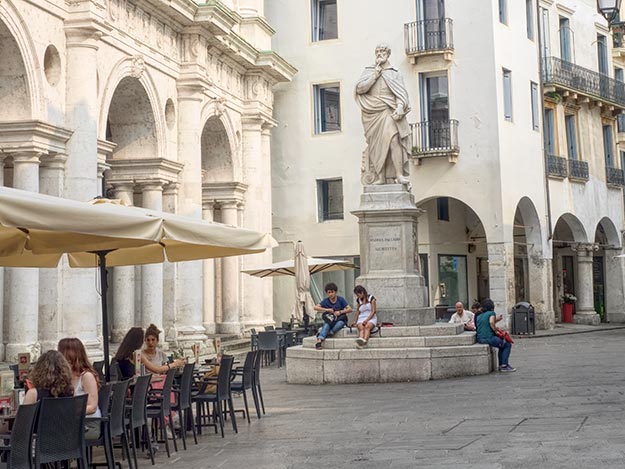
Palladio’s time in Rome would come to define his body of work. Throughout his professional life, he remained loyal to the secret harmony and language of classical architecture: clarity, order, and perhaps most importantly, symmetrical proportions. The Palladian architecture of Vicenza, as it became known, spread throughout Europe and even crossed the pond to America. In the 17th and 18th centuries, a number of great country houses were built in the English countryside. The Queen’s House at Greenwich, the Banqueting House at Whitehall, and the uncompleted Royal Palace of King Charles I in London are all fine examples of the Palladian style. Americans may be surprised that both the White House and the Capitol Building in Washington D.C. relied heavily on Palladianism.


However, the finest examples remain the municipal buildings, palaces, churches, and country villas that were designed and built by Palladio himself. The city of Vicenza is home to twenty-three of his buildings. An additional 21 villas designed by the architect are located in the surrounding countryside. In 1994, UNESCO inscribed the collected structures on the World Heritage List as, “The city of Vicenza and the Palladian villas of the Veneto.”
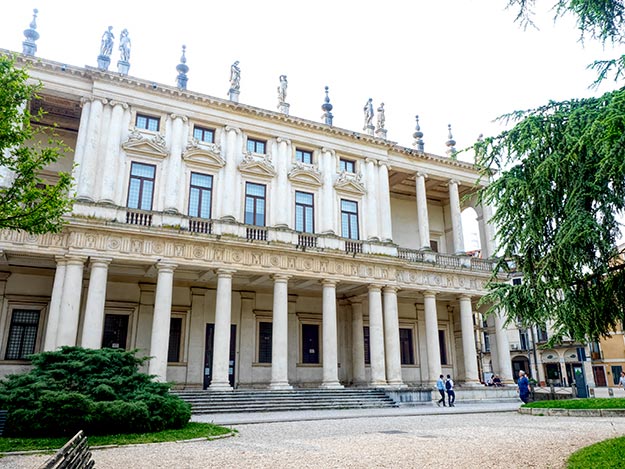
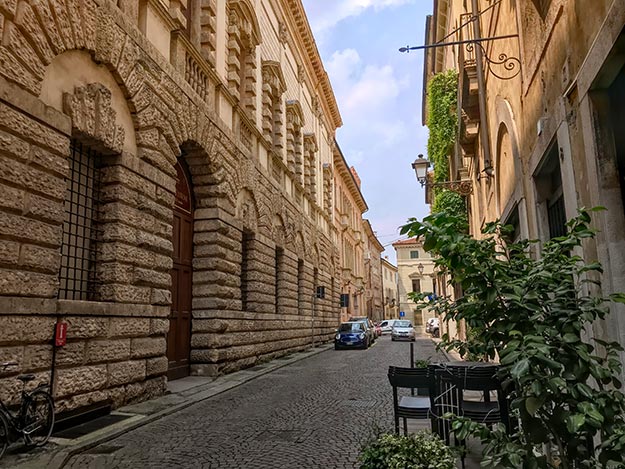
Seeing the outlying villas requires a car and some time, but Vicenza is small enough to see on foot. The city is a virtual open-air museum of Palladian palaces, arches, and domes, but the two sites that should not be missed are the Palladian Basilicata and Teatro Olimpico. The Basilicata commands one entire side of Piazza dei Signori, the heart of Vicenza. Built between 1546 and 1549, it features a two-story high loggia, a covered exterior arched gallery rising around an existing palace.
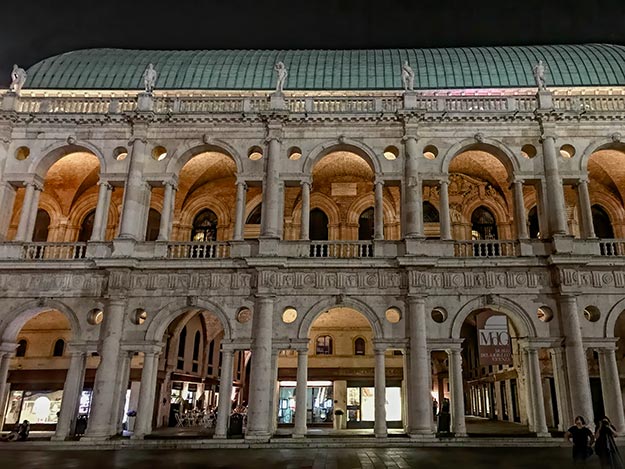
Teatro Olimpico was the last building that Palladio designed prior to his death in 1580. Construction was completed by his son, Silla, and Vincenzo Scamozzi, who installed the famous “Seven Streets of Thebes” stage set. Utilizing a trompe-l’œil technique, he created an illusion of long streets receding to a distant horizon. The scenery was used for the first performance in 1585 and is the world’s oldest surviving stage set. The theater itself, which is still used for performances, is one of only three remaining Renaissance theaters in existence. Every afternoon, for a small fee visitors can attend a light show that illustrates the three-dimensional illusion created by the theater’s stage set.
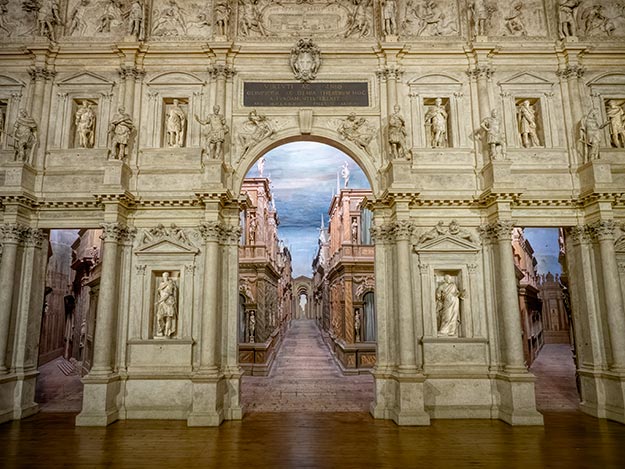
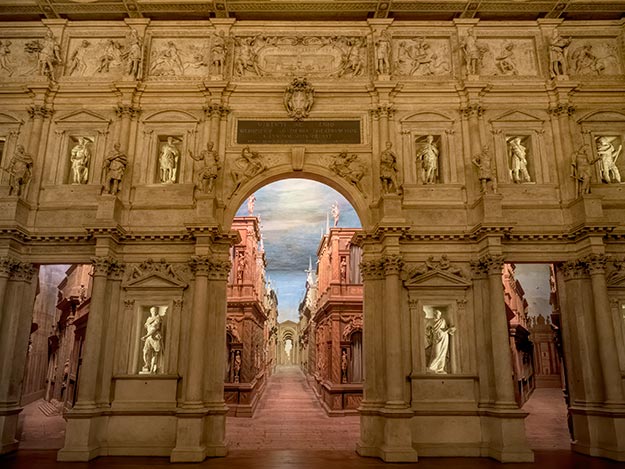
Though most examples of the Palladian architecture of Vicenza can be seen in a single day, I strongly encourage visitors to spend two or three days enjoying the city. A weekly market in the main square, a cute pocket beach on one of the two rivers that run through town, and dozens of outdoor cafes and gelato shops all bear investigating. Best of all, because Vicenza hasn’t yet been discovered by tourists, it is never crowded and full of friendly, welcoming locals.

Hello Barbara,
Thank you for posting this blog about Palladian Architecture. I am currently going for my Bachelors in Architecture and for a project have to study Palladian. Your blog has helped me further my knowledge on the material. I will be citing your post in my turned in assignment.
I hope to read more of your posts in the near future.
Jennifer
Thanks so much for your comment Jenifer. I’m pleased my article helped in some small way.
Looks like lovely place to visit and such great pictures to show the the talents of Palladio. Thanks for sharing.
You’re welcome Betty, it’s a charming little town.
Hi Barbara, your article and images caught my eye because I was recently in Vicenza and you feature several stunning works of Palladio that I missed! Very nice and thanks for sharing.
You’re welcome Suzette. Thanks for your comment 🙂
Thank you for your comments and lovely photos.
You’re very welcome Lynda and Mark. Glad you enjoyed them.